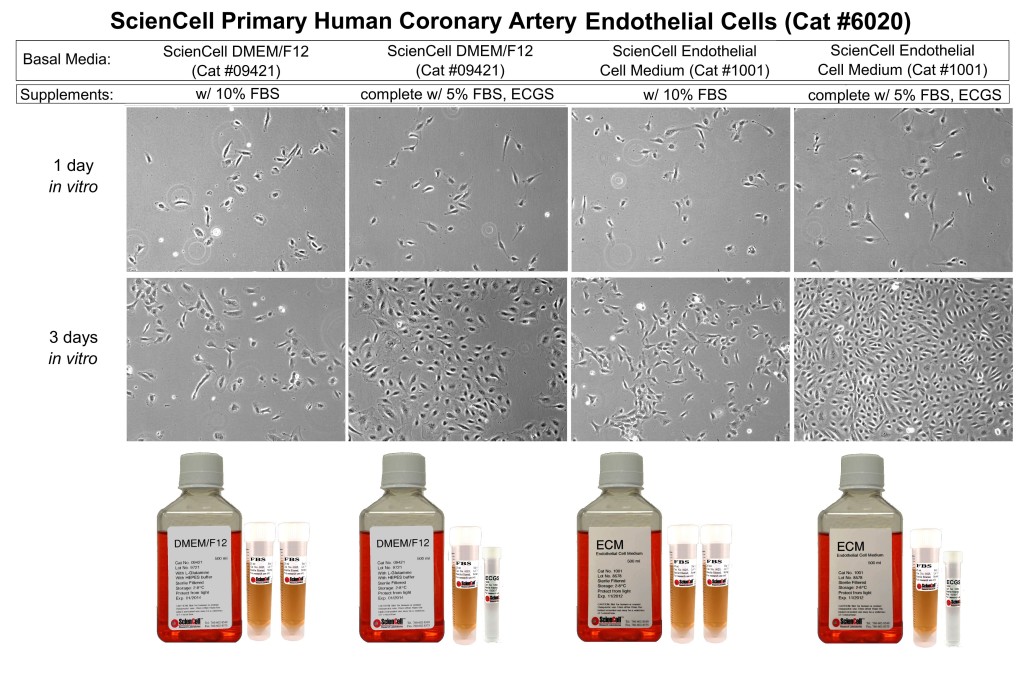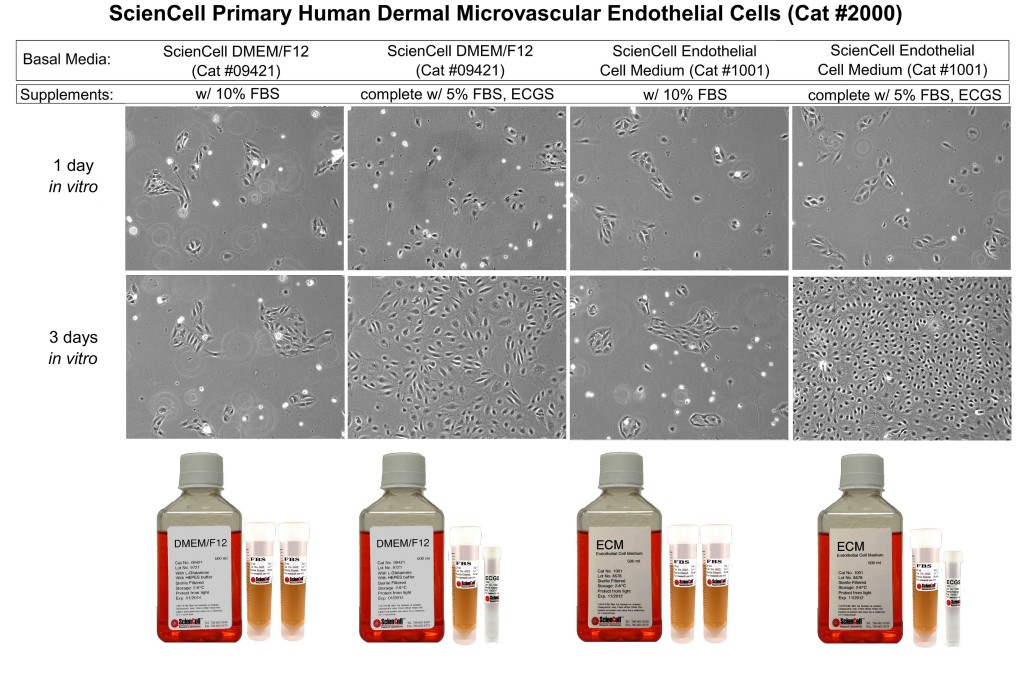Choosing which media to use with your primary cells can be daunting. Whether you are replicating a formula from a publication, optimizing your own supplemented classical or nutrient media, or purchasing commercially available specialty media, it is important to understand how this choice will affect your primary cultures, and subsequently your research.
Many researchers working with cell lines commonly use classical and nutrient media, which is sufficient for cell line culture. Primary cells, however, often require additional nutrients for good performance. It is important to remember the difference between cell lines and primary cells, and how these differences affect nutritional requirements. Cell lines are typically very proliferative, are well-adapted to 2-dimensional culture, and tend to be more resilient to culture conditions. Conversely, normal primary cells are taken from their 3-dimensional host tissue and transferred to 2-dimensional culture, are less proliferative than cell lines, and have more complex nutritional requirements. Primary cells also have a limited lifespan and will become increasingly senescent over time in culture. Due to these differences, specialty media is often a better option for primary cell culture.
Specialty media are optimized for each specific cell type and are typically more complex than classical media. Specialty media are often designed to be used with little or no serum, therefore, the media are supplemented with the growth factors, lipids, and hormones to compensate. The benefit of this approach is that adding these defined components back allows you optimize the components and concentrations for the specific cell type.
To illustrate how choosing the right basal media and supplementation can make a difference in your primary cell cultures, we show a simple experiment. We used primary human dermal microvascular endothelial cells because they can be a challenging cell type to culture. We looked at their growth in DMEM/F12, which is already a very supportive basal medium and compared it to ScienCell specialty media optimized for endothelial cells (ECM; Cat #1001). We also compared these basal media with higher serum levels (FBS 10%) versus lower serum levels (FBS 5%) in combination with our endothelial cell growth supplement, a mixture of hormones and growth factors optimized for endothelial cells (ECGS; Cat #1052).
Although the initial seeding density was the same, the cells responded very differently in the various media. First, note that in the DMEM/F12, the cells grew more quickly with the combination of 5% FBS and ECGS compared to 10% FBS. We also see a similar trend in these conditions with the Endothelial Cell Media. This suggests that a lower serum level, in combination with growth factors and hormones, is better for endothelial cell proliferation. Next compare the different basal media with 5% FBS and ECGS. The cells not only grew faster, but also had a more compact morphology in the ECM compared to the DMEM/F12.
 These findings are not limited to microvascular endothelial cells. We performed the same experiment using large vessel endothelial cells and obtained similar results. Taken together, these figures demonstrate how optimized basal media and supplementation can have a dramatic effect on primary cell growth. Remember that the healthier your primary cells are, the more relevant your results will be.
These findings are not limited to microvascular endothelial cells. We performed the same experiment using large vessel endothelial cells and obtained similar results. Taken together, these figures demonstrate how optimized basal media and supplementation can have a dramatic effect on primary cell growth. Remember that the healthier your primary cells are, the more relevant your results will be.
In conclusion, it is important to consider the complex needs of primary cells and choose the best media for your culture. At ScienCell, we have invested the time and resources to find the best media for each primary cell type. Our complete specialty media kits include basal media, a growth supplement, penicillin/streptomycin and FBS (if needed) and are optimized to work in combination.
For technical questions: techsupport@sciencellonline.com

